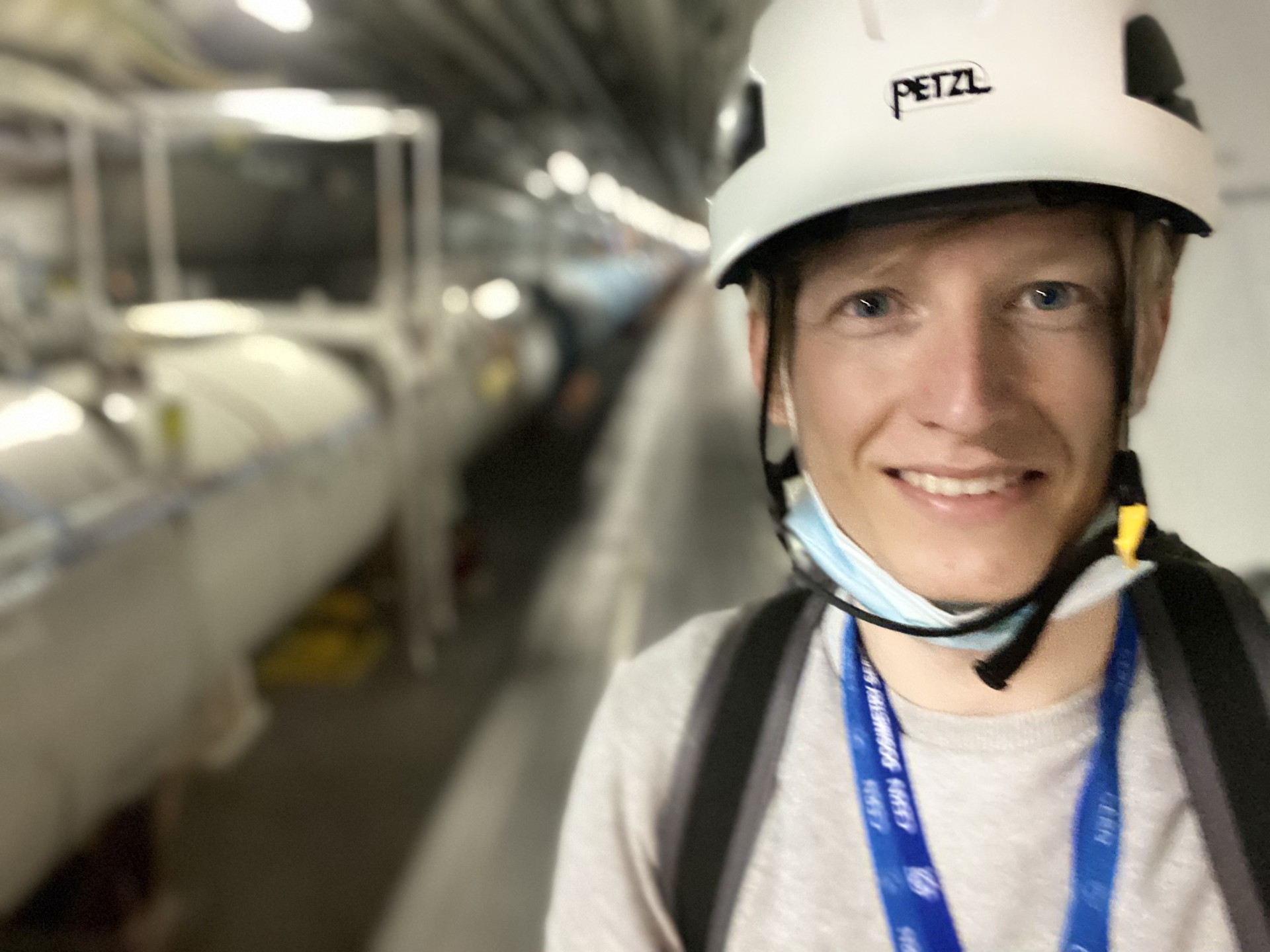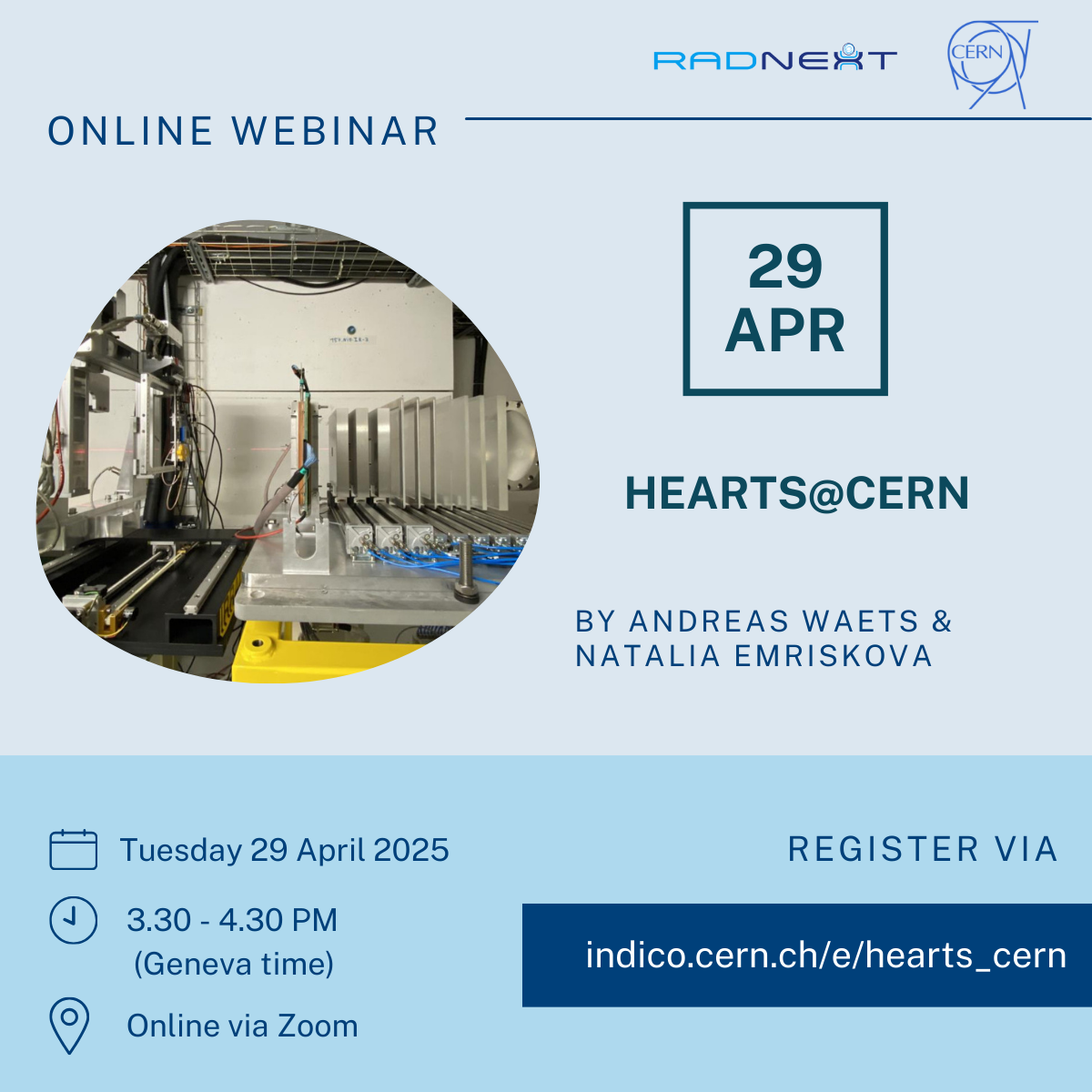[RADNEXT] HEARTS@CERN: Very-High-Energy Heavy-Ions for Space Electronics testing
HEARTS@CERN: Very-High-Energy Heavy-Ions for Space Electronics testing
The reliability of spacecraft and payloads can be tested on Earth using heavy ion beams from high-power accelerators. However, only a few accelerators worldwide can reproduce space-like radiation fields, and the growing demand for heavy ion testing far exceeds current capabilities. The EU-funded HEARTS (High-Energy Accelerators for Radiation Testing and Shielding) project aims to bridge this gap by expanding Europe’s heavy ion beam access for the space sector. It brings together leading scientific accelerator facilities - CERN and GSI - alongside industry partners Airbus, TESAT, Thales Alenia Space (Italy), Cosylab, and the University of Padova. This collaboration enhances ion beam availability and optimizes its use for space applications. In this webinar, the HEARTS@CERN facility is presented which exploits very-high-energy, heavy ion beams to test microelectronics for space applications. These beams are representative of inducing radiation effects caused by Galactic Cosmic Rays (GCRs) present in space, and combine high LET (up to 40 MeVcm2/mg) and high penetration range (>1mm) simultaneously. This is of particular importance for board-level testing and testing state-of-the-art microelectronic components with complex, 3D architectures, removing the need for testing in vacuum or de-lidding as is necessary in lower energy ion facilities. In this presentation, the HEARTS@CERN facility status will be detailed, along with the challenges in expanding the potential of this unique resource towards the development of a user-friendly and accessible irradiation facility.
Speakers:
Natalia Emriskova did a PhD thesis at CERN within the CMS Collaboration, working on the system development and validation for the new CMS silicon pixel detector for High Luminosity LHC and obtained her PhD degree in 2021. Since then she is a member of the Radiation to Electronics (R2E) group at CERN, where she plays a key role in the HEARTS project, which focuses on developing very high-energy heavy-ion testing facilities for space electronics qualification. Her responsibilities include technical coordination of the project, providing user and technical support, overseeing mechanical and electrical integration with the facility, and conducting beam characterization and dosimetry measurements using solid-state detectors. (linkedin.com/in/natalia-e-a81461108/)

Andreas Waets studied Nuclear Physics at KU Leuven University in Belgium. He worked for 2 years in the Space Environments and Effects section at the European Space Agency, mainly working on spacecraft-plasma dynamics and space radiation monitoring. He joined CERN in 2018 to work on the High-Luminosity LHC project studying beam-matter interactions for machine protection. Since 2022 he is a PhD student at the University of Zurich and a member of CERN's Radiation to Electronics (R2E) team, active in CERN's heavy ion for radiation effects testing activity as applied physicist and engineer. (linkedin.com/in/andreas-waets/)

